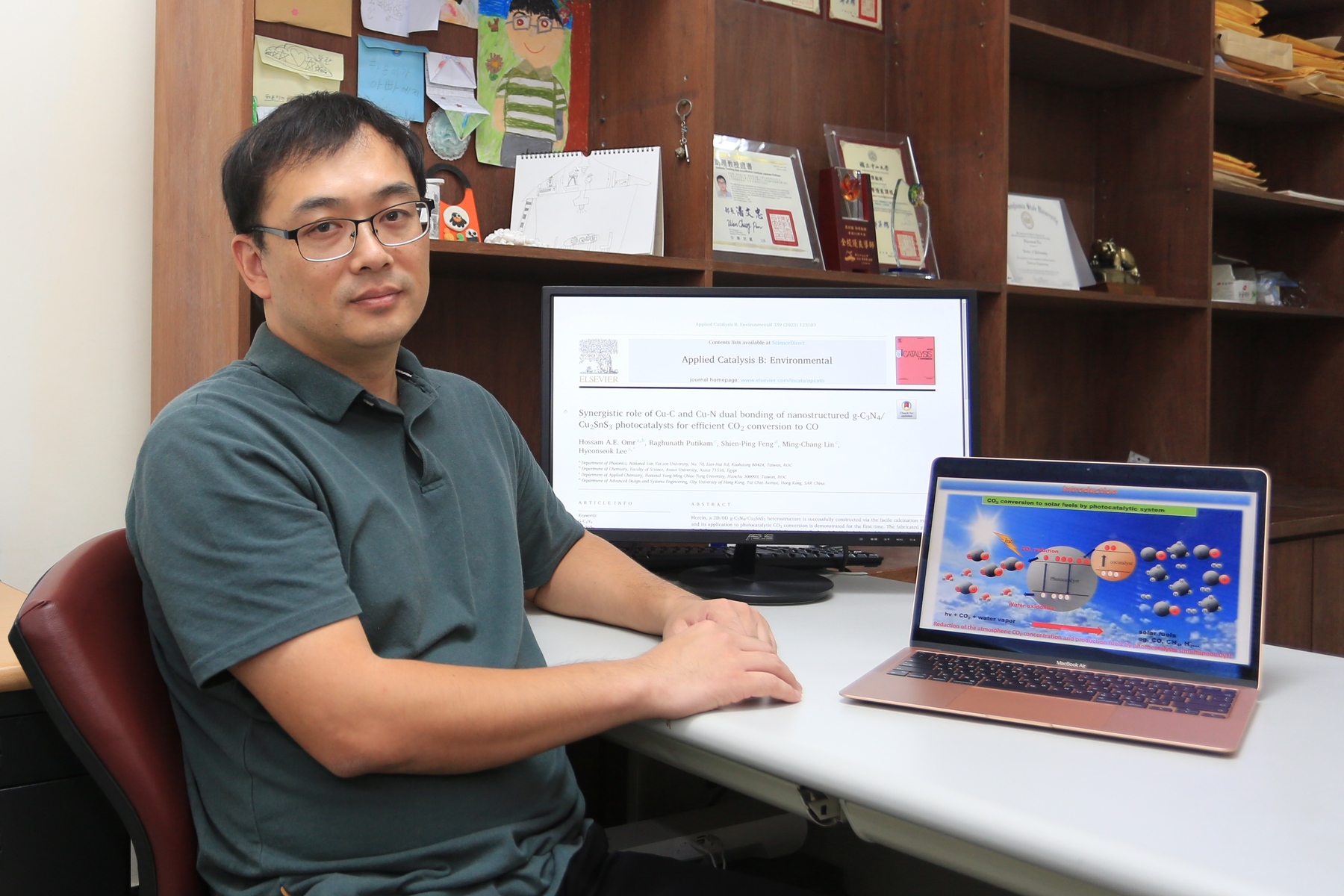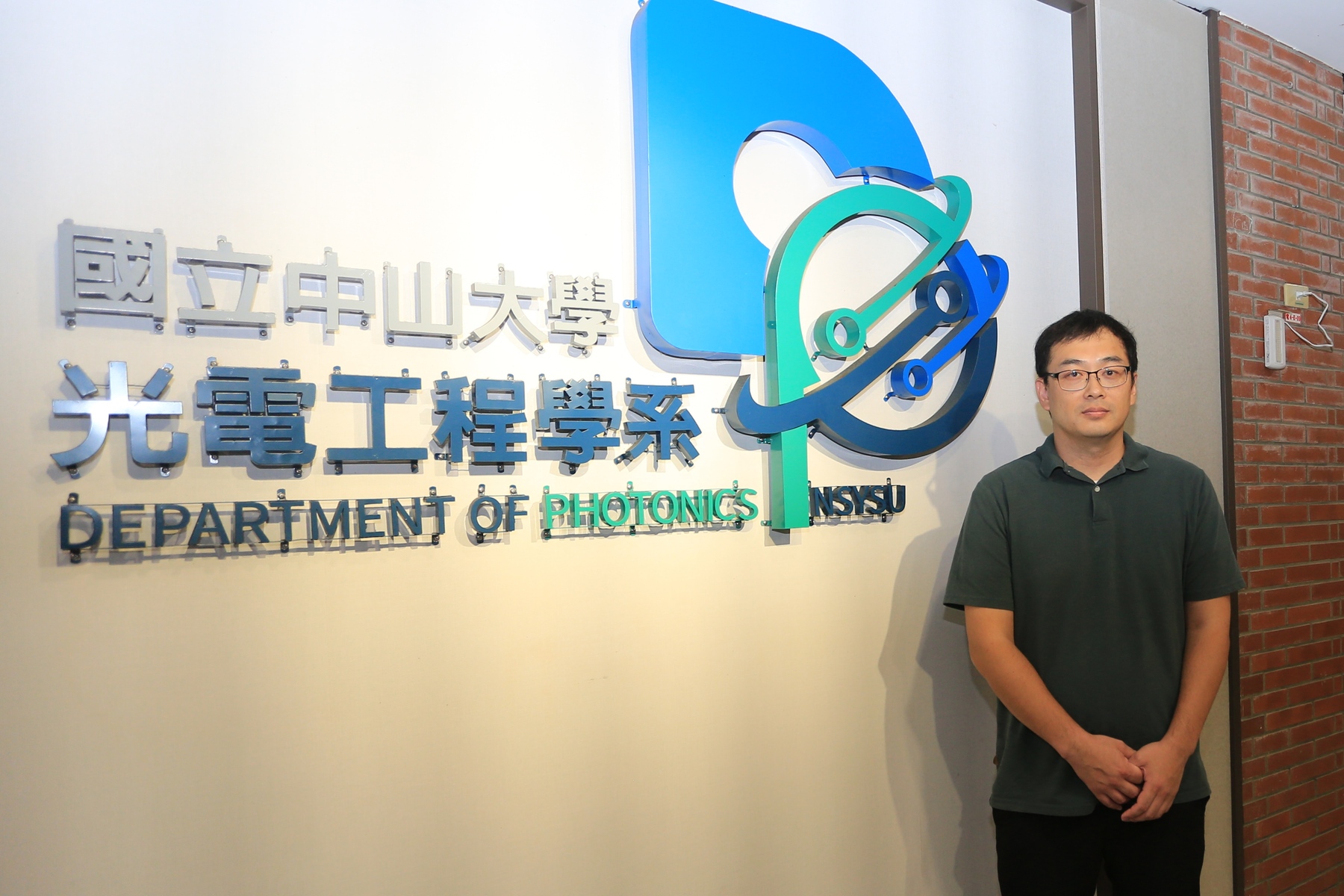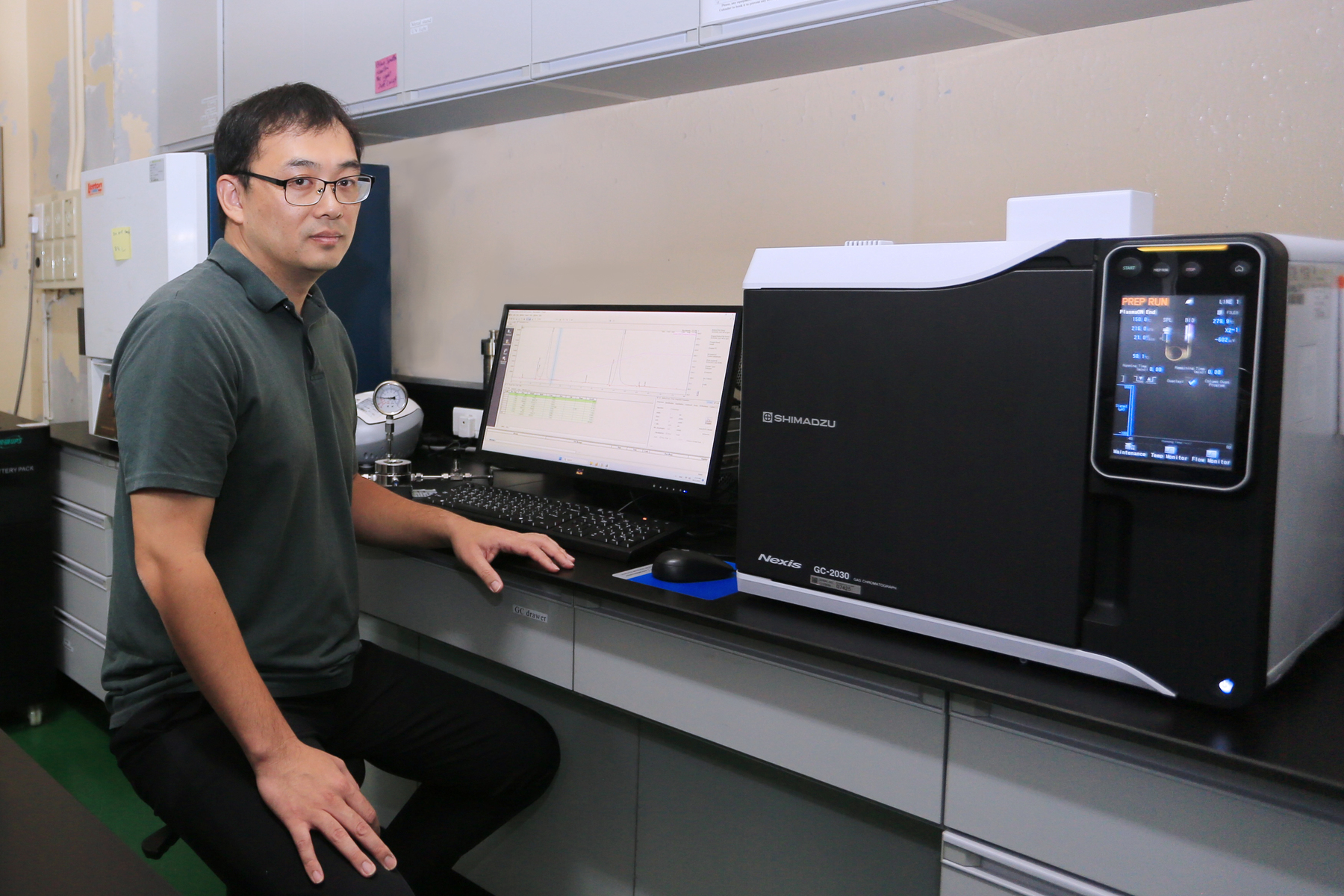NSYSU’s research found that nanostructured photocatalysts conversion may help carbon reduction, and this result was published in the top international journal



2023-09-19
Research from National Sun Yat-sen University (NSYSU) has found that the conversion and application of nanostructured photocatalysts can help carbon reduction. The latest research of Assistant Professor Hyeonseok Lee of the Department of Photonics found the synergistic role of Cu-C and Cu-N dual bonding from functionally nanostructured graphitic carbon nitride (g-C3N4)/ ternary metal sulfide (Cu2SnS3, CTS) photocatalysts for efficient CO2 conversion to CO. “This is the first demonstration of g-C3N4/Cu2SnS3 nanostructured photocatalysts for CO2 conversion in the world,” Prof. Lee mentioned. This research is expected to contribute to the further development of photocatalysts that can mitigate massive energy demands and environmental issues such as global warming. This research will be published in one of the top international journals — “Applied Catalysis B: Environmental” recently.
Prof. Hyeonseok Lee leads the Nano Energy and Interface Laboratory at the Department of Photonics at NSYSU. This work is an international collaboration project with researchers from National Yang-Ming Chiao Tung University and the City University of Hong Kong, in an attempt to develop highly active, non-toxic, and long-term stable photocatalytic materials. Prof. Lee pointed out that although the pioneering work for photocatalytic CO2 conversion technology using semiconductor materials was reported in 1978, the development and design of photocatalysts' efficient, selective, and long-term stable performances still have been great challenges for nearly four decades.
The research implemented by Prof. Lee’s research team includes the combination of nanostructured materials by synthesized ultra-thin g-C3N4 powders and Cu2SnS3 nanoparticles nanocomposites by hot injection method. The engineered g-C3N4/Cu2SnS3 nanocomposites record a superior CO production rate of 18.2 μmol∙g−1∙h−1 with an apparent quantum yield of 2.2% at 500 nm of light illumination, which is the highest among g-C3N4/ternary metal sulfide photocatalysts to the best of our knowledge. These superior performances stemmed from the successful incorporation of CTS materials onto the surface of ultra-thin g-C3N4 nanosheets (UCN) and are related to the formation of the unique Cu-N and Cu-C double bonds at the UCN/CTS interface. More interestingly, it is found that the Cu-N and Cu-C dual bonds play an essential role in the activation of interface defect-mediated Z-scheme conduction and the supply of highly reactive Cu sites in the Cu2SnS3 NPs. These Cu-N and Cu-C double bonds strengthen the essential factors of highly efficient photocatalytic CO2-to-CO conversion such as light absorption, charge transfer, and CO2 adsorption.
Compared to other reported photocatalysts, this fabricated photocatalyst achieved the greatest production rates with 100% selective production for CO from CO2. This fabricated catalyst is activated by its unique Cu-N and Cu-C double bonds and produces CO efficiently. The fabrication route of this photocatalyst is safe, easy, and eco-friendly compared to previously reported methods. The fabricated nanostructured photocatalyst stably works for CO2 conversion in an expanded operation time with high recyclability. Under the trend of focusing on global warming, environmental protection, and sustainable development, this research can convert CO2 in the atmosphere into renewable chemical industry raw materials or fuels. If relevant industries or factories can widely apply this technology, it will help reduce carbon emissions, realize the possibility of sustainable environmental green energy, and fulfill corporate social responsibilities.
“We succeeded in the development of a 2D/0D photocatalytic system based on g-C3N4/Cu2SnS3 nanostructure through a very simple method. Interestingly, our catalysts form a unique Cu-C and Cu-N dual bonding that accelerates the photocatalytic CO2 conversion. This study will open a new avenue for promising photocatalytic materials and a novel design for highly efficient CO2 conversion. The research team will continue to explore new possibilities and new solutions for the environmental problems that we experience on Earth.” Prof. Hyeonseok Lee emphasized that they will continue to study related research for new materials, new designs of structure, and an in-depth understanding of the topics to seek the optimal photocatalytic system.
[Appendix]
"Applied Catalysis B: Environmental" is an international top journal, and its 2022 Journal Impact Factor is 22.1. According to the Journal Impact Factor, its percentile is 99.1 in the category of engineering-environmental, ranking 1st among 55 journals. According to the Journal Citation Indicator, its percentile is 99.33 in the category of engineering-environmental, ranking 1st among 75 journals.
Journal article online link:
https://www.sciencedirect.com/science/article/pii/S0926337323007464
